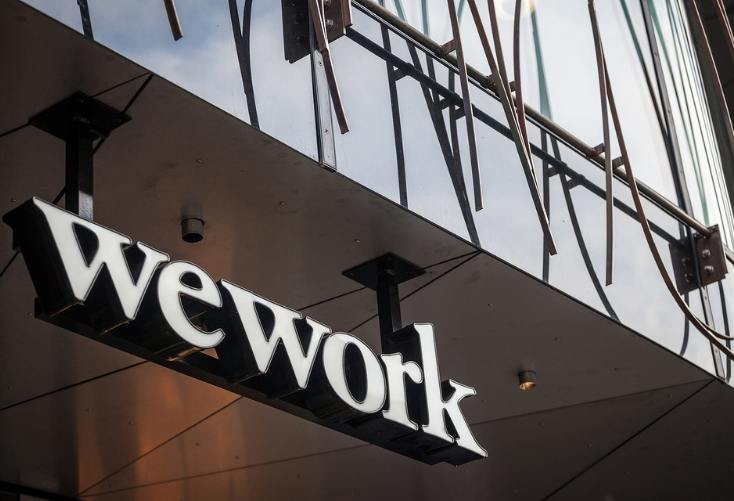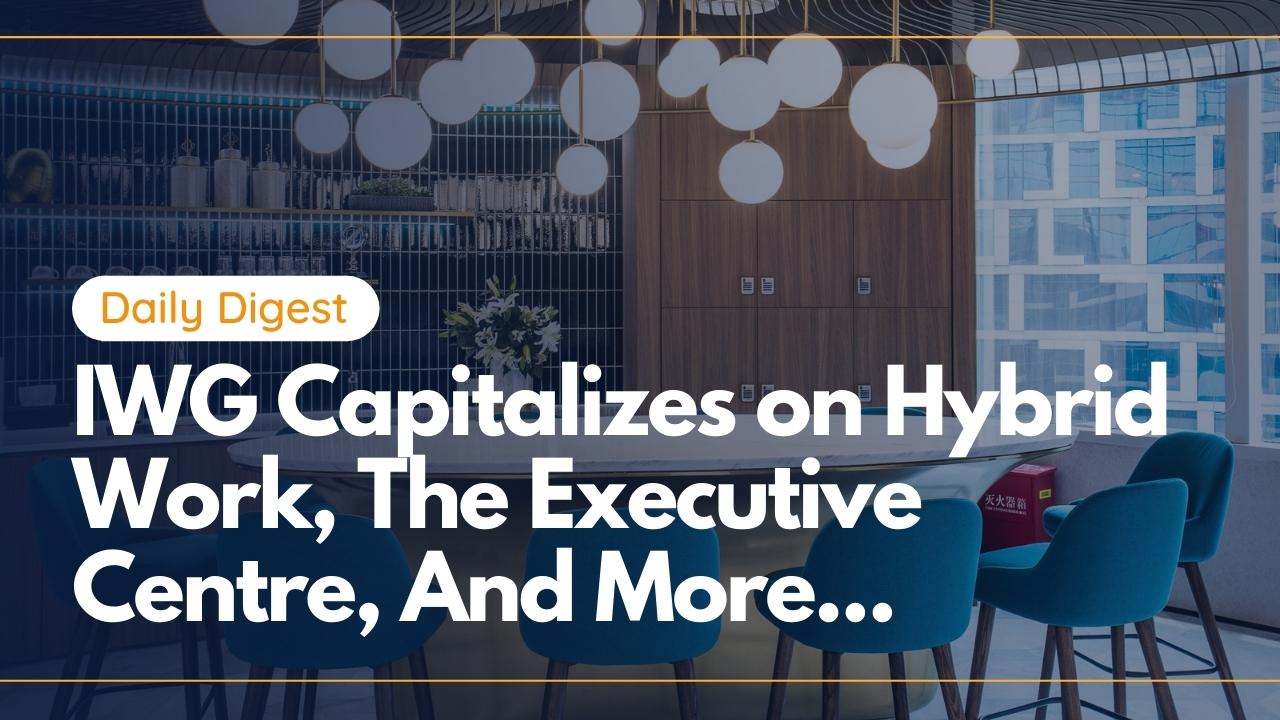Hand selected flexible workspace news from the most reliable sources to keep you ahead of the pack. We find all the latest news, so you don’t have to. Morning and afternoon updates. Stay in the know.
Here’s what you need to know today:
- Amazon Introduces Bike Commuter Benefit
- Slack Introduces New Tools To Accommodate Hybrid Models
- Will Holograms Become Incorporated In The Workplace?
- NASA Is The Best Place To Work In The Government
- WeWork Partners With Singaporean Superapp
- The Office May Have Employee Benefits
Amazon Introduces Bike Commuter Benefit
Amazon workers who return to the company’s Seattle office by bicycle could receive a pay off.
The company recently announced that it would be adding a bike-friendly commuter benefit that provides workers $170 a month to its over 60,000 tech employees if they bike to work.
The bike benefit aims to cover expenses such as bike leases, bike rentals, maintenance and parking. Employees who have not signed up for parking in an Amazon parking garage will have the perk available to them.
In doing so, Amazon hopes to grow its sustainability strategies and encourage greener mobility. It also doesn’t hurt that these initiatives could help the company in the increasing competition for top talent.
In fact, other major tech companies like Microsoft and Google also offer bike-related incentives.
At the moment, Amazon claims that 20% of its employees in Seattle walk or bike to work, and the other 50% use public transportation or carpool.
“Reducing our carbon footprint is a multifaceted effort that includes building urban and well-connected campuses, designing buildings that use renewable energy, and making it easy for employees to choose public transportation over their single-occupancy vehicles,” said John Schoettler, vice president of Global Real Estate and Facilities at Amazon.

Slack Introduces New Tools To Accommodate Hybrid Models
Slack has introduced a new feature that will allow users to have more seamless communication with their distributed team members.
Slack Huddles aims to support companies adopting a hybrid model and allows users to connect with their coworkers, whether they are in the office or working from home.
Through the new tool, users can easily have audio conversations across channels and send direct messages on the platform. It also features the ability to create and play back video and audio recordings, provides a full transcript and gives workers access to a new employee directory called Slack Atlas.
Other technology competitors have also been tweaking their collaborative software. For instance, Microsoft recently made design changes to its Teams app to improve workers’ interactions.

Will Holograms Become Incorporated In The Workplace?
Holograms are no longer a tool used by Star Wars universe droids to send messages — instead, professionals may now meet with their boss via holographic technology.
The demand for this technology has accelerated due to the increase of virtual meetings over the past year or so. However, because of the limitations of platforms like Zoom, holograms aim to provide a more interactive meeting experience.
Some companies have already started incorporating this technology, like WeWork, which recently announced a partnership with ARHT Media Inc. The company, which specializes in hologram technology, is helping WeWork bring holographic technology to 16 WeWork locations.
Google has also started its Project Starline initiative that aims to provide a three-dimensional experience for its virtual meetings.
Using this technology, companies are able to close deals, engage employees and provide more meaningful connections thanks to the ability to easily read body language.
Companies are also hoping to use these tools to host seminars or training sessions and allow employees to attend, while providing a more efficient and effective experience.

NASA Is The Best Place To Work In The Government
NASA has been ranked as the best place to work in the federal government for the ninth year in a row, according mostly to data from the Partnership for Public Service and global consulting firm Boston Consulting Group’s 2020 rankings.
The ranking included results from the annual Federal Employee Viewpoint Survey, as well as data from 10 agencies and responses from intelligence agency employees. The 2020 Best Places To Work survey ranked NASA at the top in terms of employee engagement.
Overall, federal employee engagement was 69 out of 100. However, the Partnership added that this year’s scores are not comparable to previous years due to changes in their calculation methods. Still, when using this new methodology to recalculate 2019’s scores, 2020 still saw a 3.9 point increase.
Among the highest ranking agencies for last year were NASA, the Government Accountability Office, the Congressional Budget Office and the Tennessee Valley Authority’s Office of Inspector General.
“The 2020 data makes clear that the federal government still has a lot of work to do to improve its competitiveness with the private sector as an employer of choice,” said Max Stier, president and CEO of the Partnership. “The government must strive to meet or exceed the private sector when it comes to employee engagement.”

WeWork Partners With Singaporean Superapp
WeWork is partnering with Singaporean superapp Grab to provide discounts to its office space.
The Grab x WeWork Pass allows Grab for Business clients a one-month trial to WeWork spaces, as well as discounted membership deals. The free trial can be redeemed once per company and there is a 10-desk office maximum.
Through this partnership, these clients will be able to use WeWork’s coworking spaces in the Philippines, Singapore, Thailand and Vietnam where they can have access to workspaces, conference and meeting rooms, plus other amenities.
Additionally, the pass provides clients access to a network of business services, which can help them decrease capital expenses.
Currently, clients can gain access to the pass in the cities of Bangkok, Ho Chi Minh, Manila and Singapore.

The Office May Have Employee Benefits
Employees are not ready to return to the office. Although vaccines are becoming more widespread and businesses are eager to bring their staffers back in, the desire to work remotely has skyrocketed.
There are numerous reasons for this. The lack of commute, the better work-life balance and the cost savings make it clear that remote working is the ideal arrangement for many.
For the most part, remote working benefits the employee, while in-office arrangements benefit the company. But are there still employee perks to coming into the office?
The answer is yes, and being reminded of these perks may help business leaders in the transition to a post-pandemic workplace.
For instance, the idea of company culture. Although there can be a sense of community when working remotely, the ideal culture happens when people are working alongside each other. This is particularly important for recent remote workers that may not understand the nuances of how things run at their new job.
This coincides with the idea of collaboration. There are numerous collaboration apps and tools that aim to improve virtual teamwork. However, there is no true replacement for in-person brainstorming sessions.
Having a physical workplace builds momentum that progresses projects. Whether that’s a quick impromptu exchange of ideas in the hallway, or taking a few minutes to help a colleague with something they are struggling with, in-person collaboration is more effective in the long run.



 Dr. Gleb Tsipursky – The Office Whisperer
Dr. Gleb Tsipursky – The Office Whisperer Nirit Cohen – WorkFutures
Nirit Cohen – WorkFutures Angela Howard – Culture Expert
Angela Howard – Culture Expert Drew Jones – Design & Innovation
Drew Jones – Design & Innovation Jonathan Price – CRE & Flex Expert
Jonathan Price – CRE & Flex Expert














